How to boost online sales this holiday season with a personalized shopping experience
The holiday season is the most crucial period for retailers. Besides high sales volume, it is also an opportunity to…
Read more05. 08. 2024.
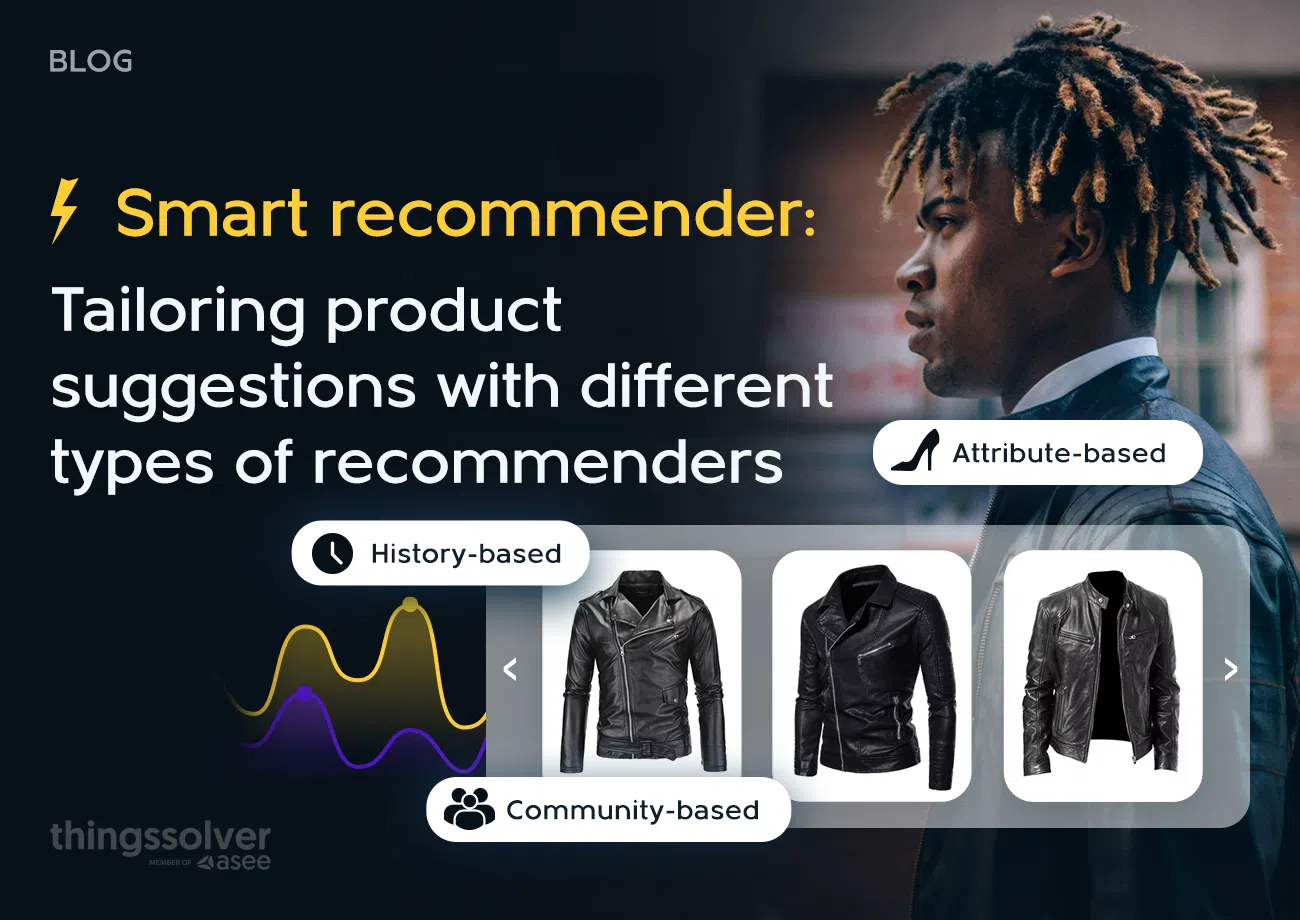
Do you know that there are several types of recommenders you can use to additionally personalize your customer’s experience?
Simple personalization methods are no longer enough and we all know it.
Before we tell you how you can come up with smarter recommendations aimed at boosting your personalization efforts, let’s go through some common misconceptions about AI-powered recommenders and see what kind of recommendation challenges you can come across while using recommenders for tailoring product suggestions.
Table of Contents
Despite their obvious effectiveness, AI-powered recommender systems are sometimes misunderstood.
First, many believe recommenders will give them instant perfection. However, they require time to learn and improve based on the data you feed them. This allows them to gradually enhance their accuracy.
Moreover, some think different types of recommenders can tell exactly what each customer will buy. But recommenders prioritize generating preference scores over calculating exact purchase probabilities, which ranks items based on predicted user interest.
Contrary to what many believe, there are no one-size-fits-all recommender solutions because businesses need tailored approaches. What works for one may not suit another due to unique data and goals.
Costliness and complexity are also misconceptions that prevent businesses from trying different types of recommenders. It’s true that some advanced solutions can be pricey. However, scalable options cater to various budgets and technical capabilities, with simple algorithms often proving highly efficient.
Finally, many think that recommenders allow for complete automation where in fact human oversight remains crucial for tuning and validating these systems to meet evolving business objectives effectively.
Now, where there are so many misconceptions, there are also challenges that affect how people use them to improve their business. Read on to find out the most common challenges you can encounter with different types of recommenders.
Matching the right products to the right customers is one of the biggest challenges for any business. This is often because you’re struggling with analyzing vast amounts of data to understand what each customer might like.
For example, if a customer has recently bought running shoes, they might be interested in similar products, like athletic wear or fitness accessories. However, suggesting items like kitchen appliances can be off-putting and feel irrelevant, right?
To avoid overwhelming customers with irrelevant products, you should implement strategies that focus on personalization. One effective strategy is segmenting customers based on their shopping behavior and preferences. This is the part where recommenders play a significant role.
Imagine having a customer who frequently buys organic food. Thanks to recommenders, you can add personalized recommendations for similar products, such as organic skincare products or eco-friendly household items.
Stay with us as we break down different types of recommenders and explain how each recommender helps you come up with more targeted recommendations.
Non-personalized recommendation systems, also known as general or static recommenders, operate based on overall trends and patterns in data rather than individual user preferences. The recommendations made by non-personalized recommenders are usually applicable to a broader audience or based on general popularity metrics.
Some types of recommenders that belong to this category include:
Let’s see how each of these recommenders works and how you can use them to come up with smarter product recommendations.
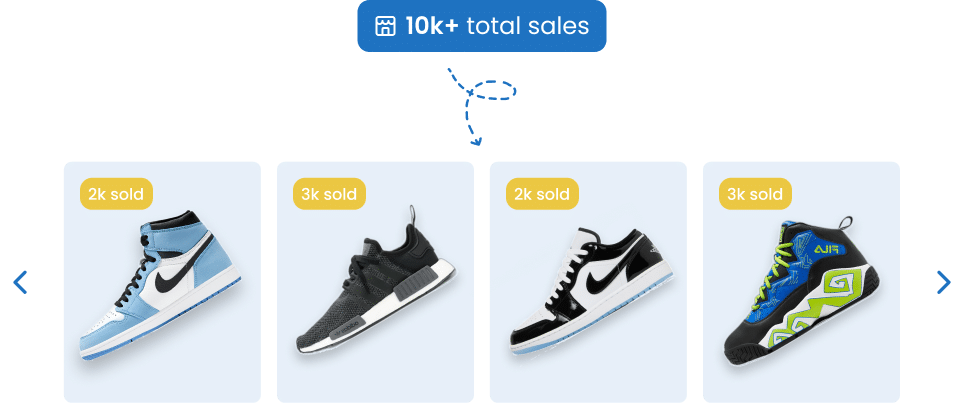
A best-seller recommender engine can help you recommend top-selling products based on specific criteria. The criteria you can rely on include:
Best-sellers
Products with consistently high sales volume or frequent purchases are likely to attract more customers. These items have a proven track record of demand and can be reliable choices for recommendations.
Most viewed products
Items that have been frequently viewed by users show high interest levels. Highlighting these products leverages their visibility and appeal to attract potential buyers.
Ratings
Highly rated products with positive feedback usually show customer satisfaction and quality. Recommendations based on ratings can build trust with your consumers and encourage repeated purchases.
This type of recommender is very convenient for creating a homepage carousel, leaflets, and search banners. And more importantly, the best-seller recommender shows great conversion rate improvement within businesses that have several comparable products within the same category.
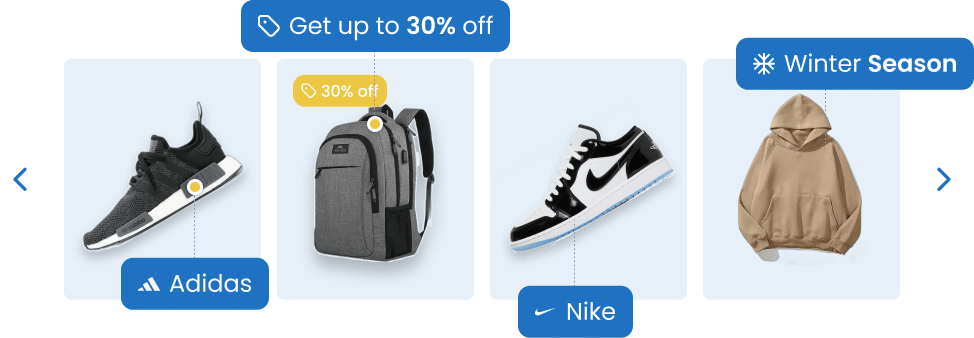
A trending-product recommender is a great option for all businesses looking to increase their conversion rates and revenue, as well as improve their customer retention rates.
But what makes a product trending?
Factors that contribute to a product being classified as ‘trending’ include:
Implementing a trending-product recommender can have a great influence on your customers’ behavior.
#1 It can create a sense of urgency
When consumers perceive one of your products as ‘trending’, this can create a sense of urgency among them. Who wouldn’t want to buy a trending product before it potentially becomes less accessible or popular?
#2 It can help avoid the fear of missing out
When a product is labeled as trending, consumers may be more motivated to buy it to avoid missing out on what is desirable or fashionable. The fear of missing out can be a strong psychological tool that can speed up the decision-making process with your consumers.
#3 It can increase customer engagement
Popular products get top spots in recommendations and marketing campaigns, grabbing the attention of more potential customers. This increased visibility encourages customers to check out and interact with these products, making them more likely to buy.
In addition to all these benefits, this type of recommender provides amazing insights into products that are losing popularity, the performance of newly added products, and information on your revenue.
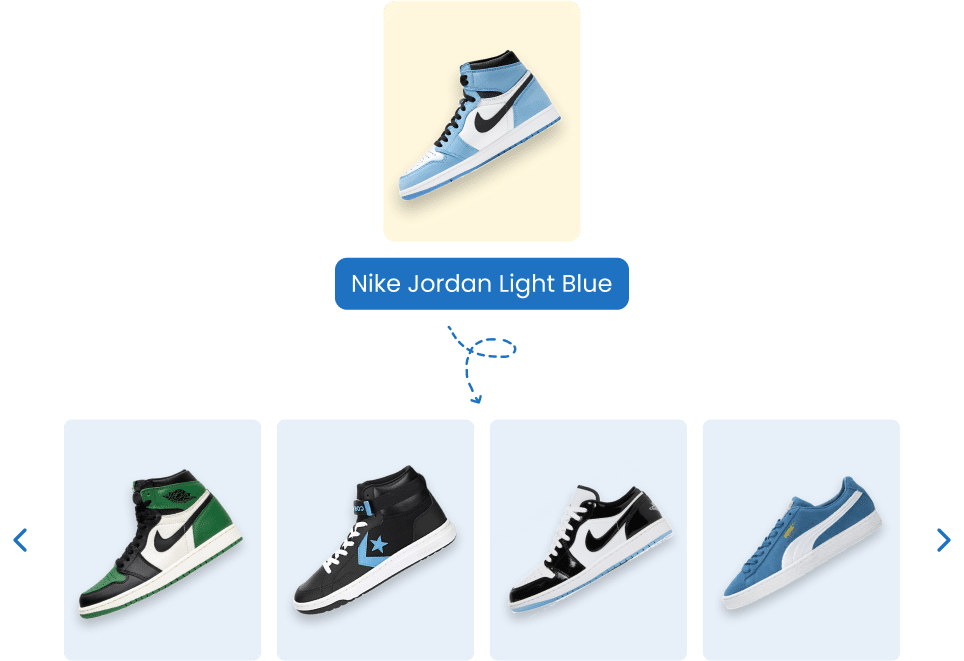
Upon learning what someone is looking for on your website in their current session, you can rely on the similar products recommender to recognize and recommend similar products.
For example, when someone looks for black sports shoes, the system can display other black sports shoes available on that webshop.
But how does this type of recommender determine product similarities?
Based on product name similarities
This method compares product names using string-matching techniques such as the Levenshtein distance or cosine similarity. It helps you identify products with similar names which may usually serve similar purposes or belong to related categories.
Based on feature embeddings
Embedding techniques can transform data about products into numerical representations. This usually includes data like:
Thanks to embedding techniques like Word2Vec, Doc2Vec, or Transformer-based models (e.g., BERT), you can create embeddings that capture semantic meanings and relationships between products. The similarity between products can then be measured using cosine similarity or Euclidean distance in the embedding space.
All in all, with this type of recommender, you can keep your visitors more focused on what you have to offer and make them not leave for the competitor’s website.
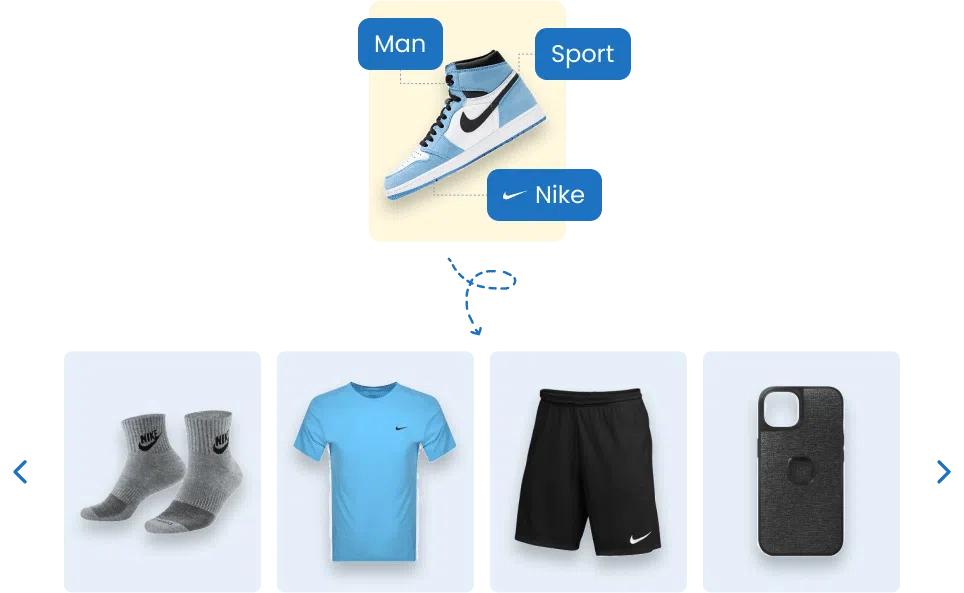
Like the similar-product recommender, the related products recommender is based on a real-time search a website visitor is performing. However, instead of displaying similar products, the algorithm will showcase products that are related to the one they are looking at.
Following the example above, when someone searches for black sports shoes, this type of recommender will showcase items related to them, such as socks, shorts, etc.
If you’re particularly keen on improving your upselling and cross-selling strategies, the related products recommender can help by:
Increasing average order value
Suggesting complementary or higher-value products that align with the customer’s current selection can encourage your customers to add more items to their cart and increase their average order value.
Enhancing customer experience
By recommending products that complement or enhance the original purchase, you can improve the overall shopping experience. Your customers will appreciate your effort to help them discover relevant items they may not have considered and add value to their purchase.
Driving repeat purchases
Effective cross-selling encourages your customers to return to purchase related products, and that is one of your main goals, right? Of course, don’t forget to focus on fostering customer loyalty and trust because that’s what makes them come back for more and increases the lifetime customer value in the long run.
Optimizing inventory management
By promoting related products to your customers, you can strategically manage inventory by aligning your stock levels with what your customers demand and buy more often/rarely. This can help you reduce excess stock of unpopular items and always have your most popular items in stock.
If you’re operating with limited data, this type of recommender is a useful and effective way to approach your audience.
Let’s now move on to discuss personalized recommenders. Personalized recommenders use individual user preferences, behaviors, and characteristics to come up with product recommendations.
Unlike non-personalized recommenders that often make generalized recommendations, different types of personalized recommenders strive to provide more relevant and specific suggestions to each user.
In essence, their ability to adapt and learn from user interactions makes them a powerful tool for your business. In this part, we’ll focus on the following types of recommenders:
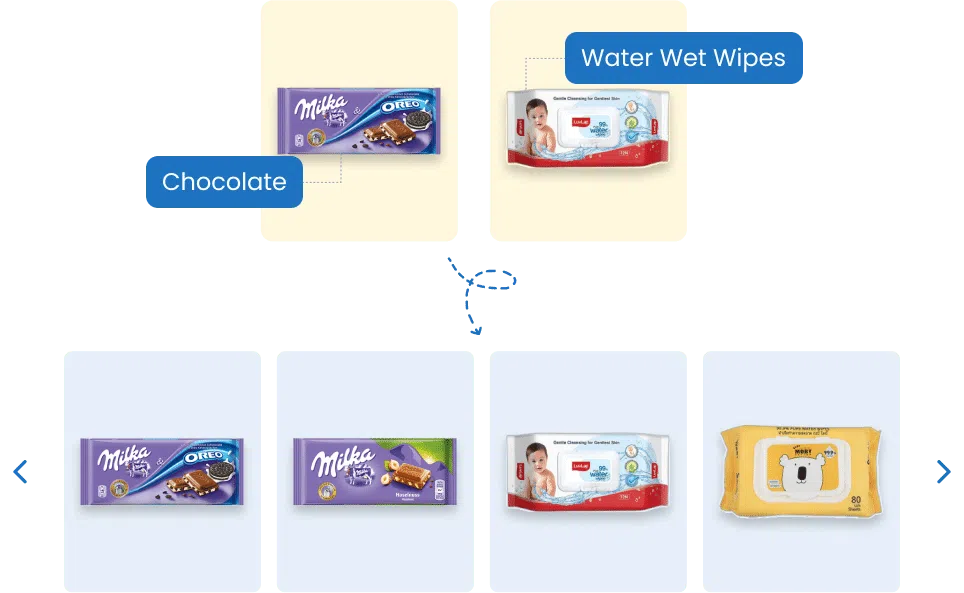
A history-based recommender anticipates customer needs by focusing on each customer’s most purchased or favorite products. This is what makes it fully personalized and offers him a fully personalized product that the client will really need in the short term.
By analyzing individual buying patterns, preferences, and frequently purchased items, this type of recommender can identify products that a customer frequently buys or shows a strong preference for. Once it gathers enough information, a history-based recommender is more likely to recommend the right products to the right people, ensuring personalization and relevance.
This level of personalization improves the customer experience and makes their shopping more efficient and enjoyable. When you provide your customers with suggestions that are more likely to meet their needs and preferences, you are saving them time and effort. Everyone appreciates that.
And since this type of recommender helps you meet your customers’ needs more accurately, you can expect them to feel valued and understood. And with feeling valued and understood, customers usually feel more satisfied and loyal.
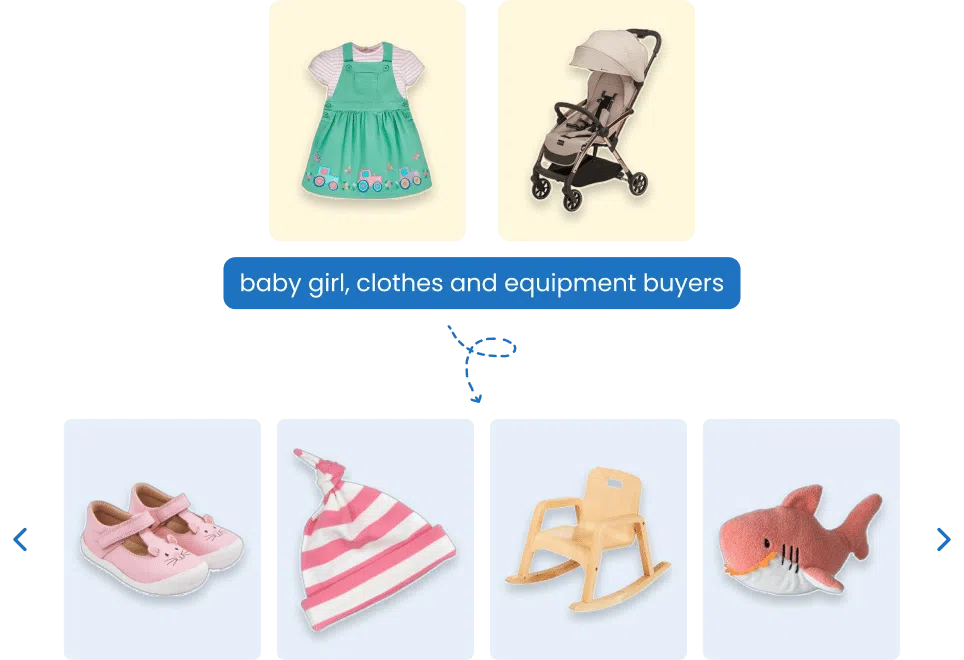
Community-based recommender recommends products based on similarities between customers and products they interacted with.
But how does it do that?
This type of recommender can enhance customer engagement by identifying similarities between customers based on their purchase history, preferences, and behavior. Community-based recommender analyzes what customers buy, like, or review and then recommends items, usually the ones enjoyed by other customers with similar tastes.
If you are keen on ensuring that each recommendation is relevant to the individual interests of your customers and that they enjoy a more satisfying shopping experience — a community-based recommender might be the right choice.
Its benefits are reflected in:
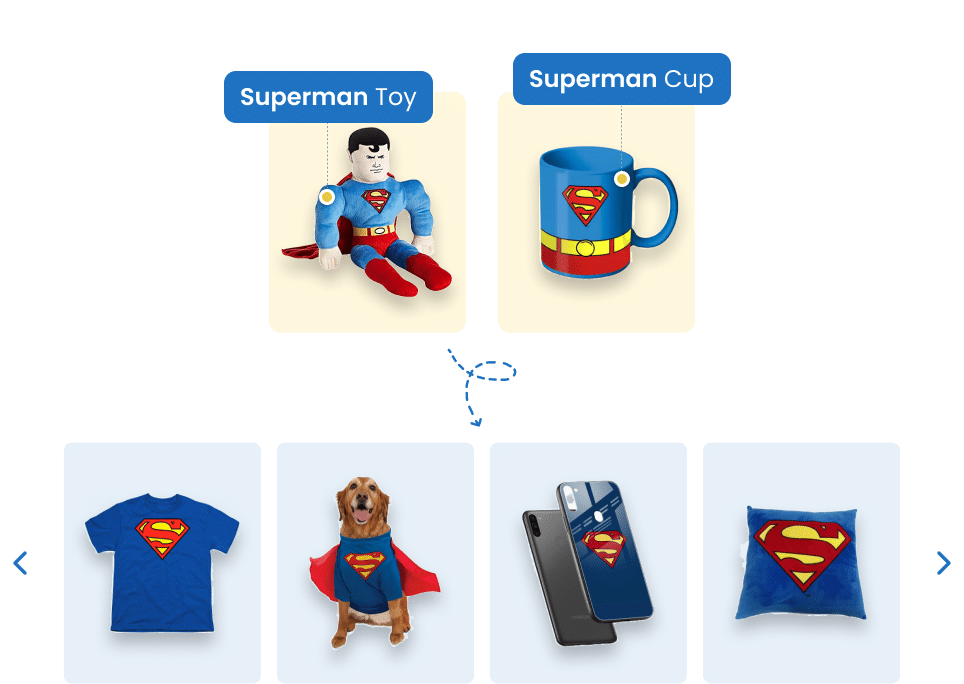
Attribute-based recommenders can recommend products based on similarities extracted from their features such as description, category, tag, or name. This type of recommender usually helps businesses offer products with the best product-feature customer fit.
By quantifying similarities between items using metrics like cosine similarity, the attribute-based recommender suggests products with attributes like those customers have shown interest in.
With this approach, you can
Companies usually find this recommender convenient for improving the add-to-cart rates, click-through rates, and average order value. But above that, this type of recommender helps improve both offline and online customers’ journeys, as well as overall engagement and performance in e-commerce.
Personalized recommendations play an essential role in providing superior customer experience and driving business growth.
Non-personalized recommenders, like best-seller or trending-product recommenders, provide a great starting point by highlighting popular items and trends. However, if you truly wish to stand out and meet the unique needs of your customers, personalized recommenders are the way to go.
Whether it’s history-based, community-based, or attribute-based recommenders, these systems learn from user interactions and preferences, delivering highly relevant suggestions that can keep your customers satisfied and loyal.
If you’re ready to take your personalization efforts to the next level, don’t forget to explore our recommender solutions or book a free demo so we can work together on transforming your customer experience and drive your business forward.
The holiday season is the most crucial period for retailers. Besides high sales volume, it is also an opportunity to…
Read moreA closer look at analytics that matter You’ve trained your AI agent. It runs. It talks. It reacts. But does…
Read moreImagine having a team of top chefs, but your fridge is packed with spoiled ingredients. No matter how talented they…
Read more